I don’t know for sure what the display meant but I doubt the performer was happy about the presence of the other catbird.
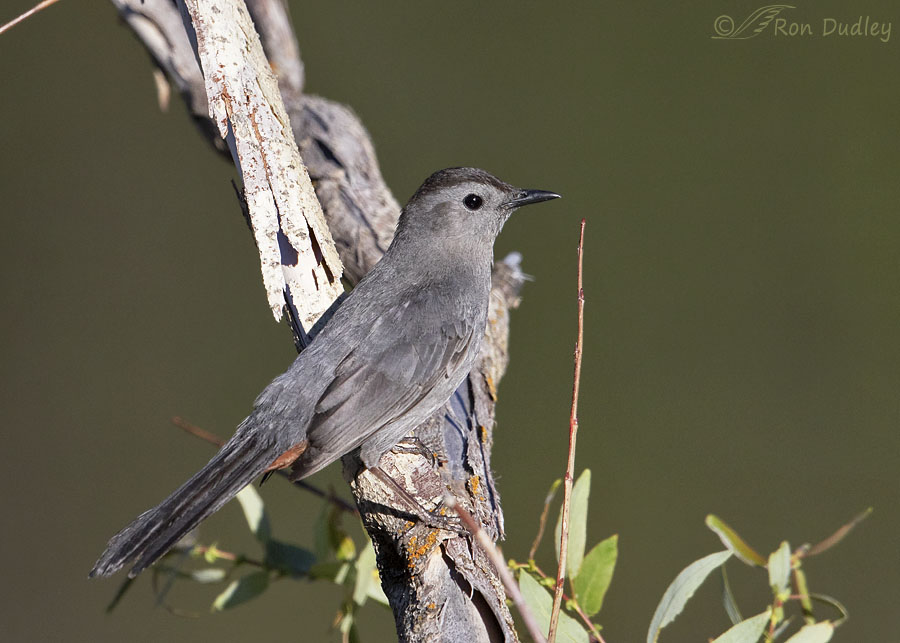
1/3200, f/6.3, ISO 800, Canon 7D Mark II, Canon EF 500mm f/4L IS II USM + EF 1.4 III Extender, not baited, set up or called in
Five days ago while attempting to photograph other birds in the mountains I could often see and hear catbirds in the distance interacting with each other. Typical of the species they were shy and hesitant to come in close so I mostly focused on other birds.
So when this one suddenly landed on a nearby branch I aimed my lens its way despite the inconvenient vertical twig directly in front of the bird. I enjoy being able to see at least a hint of the rufous undertail coverts of this species that are most often hidden from view.
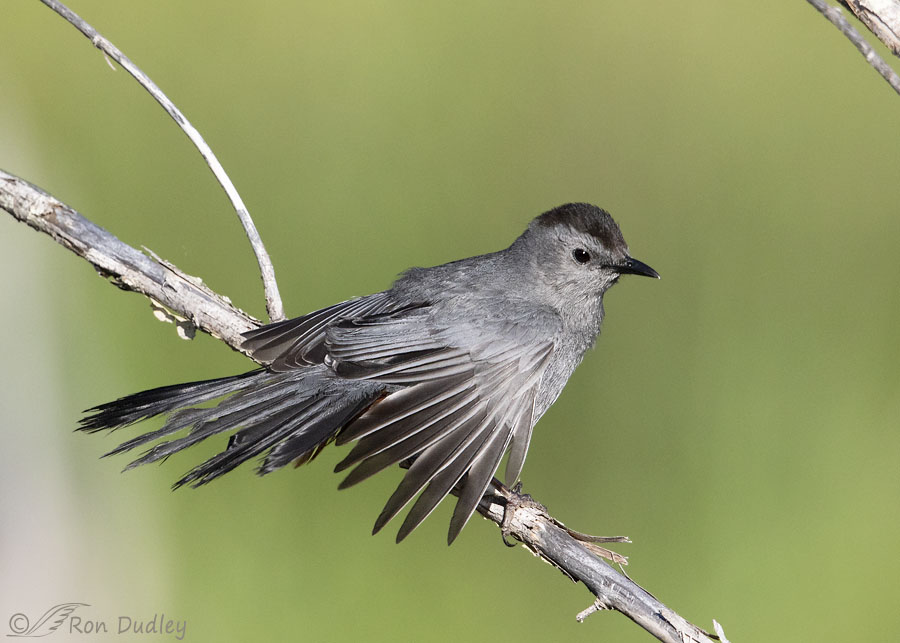
1/5000, f/6.3, ISO 800, Canon 7D Mark II, Canon EF 500mm f/4L IS II USM + EF 1.4 III Extender, not baited, set up or called in
Two minutes later two catbirds landed on the slope below me and even though they weren’t particularly close to each other this one began to display toward the other bird. This may look a little bit like a rouse but it was definitely some kind of display directed at the other catbird.
Those tail feathers need some attention don’t they.
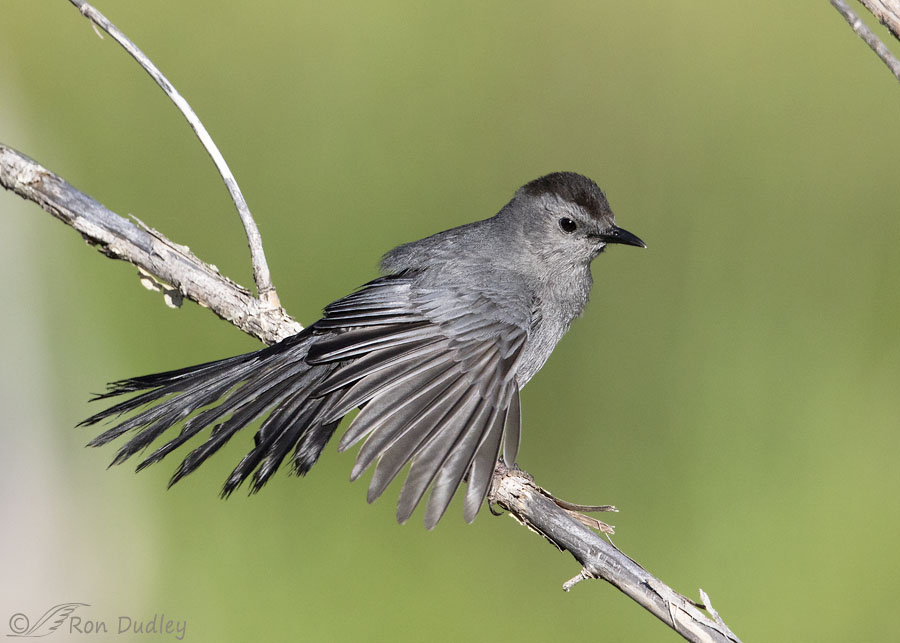
1/4000, f/6.3, ISO 800, Canon 7D Mark II, Canon EF 500mm f/4L IS II USM + EF 1.4 III Extender, not baited, set up or called in
When the display began I fired off a quick burst. This is the second shot in that burst.
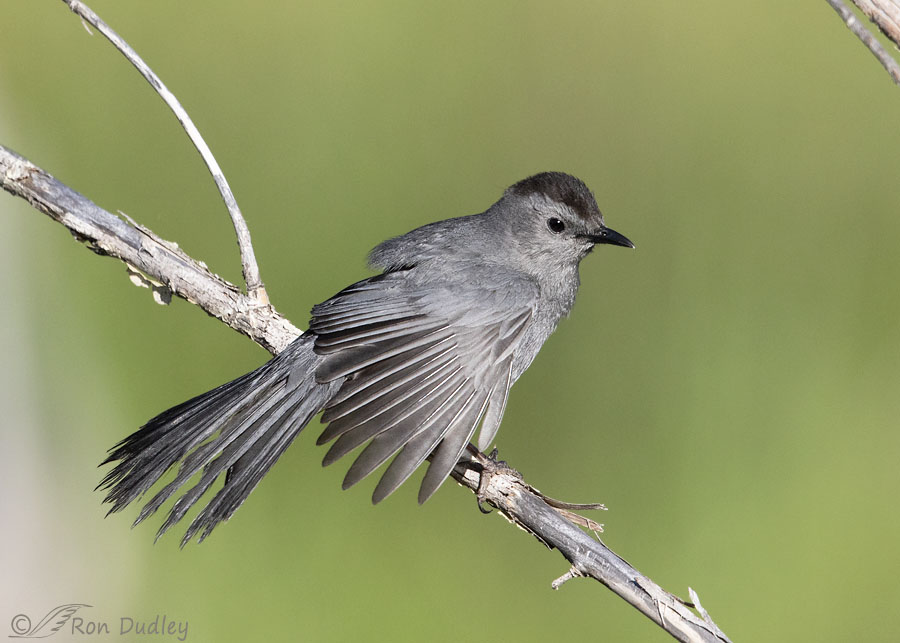
1/4000, f/6.3, ISO 800, Canon 7D Mark II, Canon EF 500mm f/4L IS II USM + EF 1.4 III Extender, not baited, set up or called in
And this is the third. There isn’t a lot of difference between them but I believe seeing all three of them clearly demonstrates that it wasn’t a rouse.
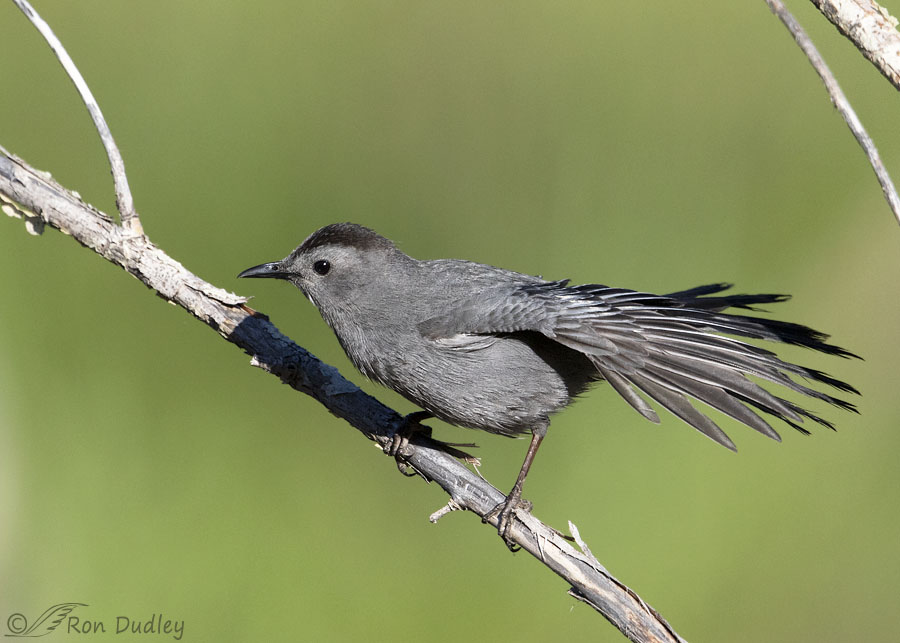
1/4000, f/6.3, ISO 800, Canon 7D Mark II, Canon EF 500mm f/4L IS II USM + EF 1.4 III Extender, not baited, set up or called in
Then the catbird turned on its perch and continued to display toward the other bird who had been flitting around on the slope below. Gray Catbirds aren’t known to physically fight during conflicts but they have several threat displays and I believe this was one of them.
This was the first time I’ve been able to get decent photos of such a behavior in catbirds so I thought my readers might enjoy seeing them.
Ron.


I think the tails get worn while nesting.
Could be, April.
I did enjoy it.
And love the detail you were able to capture. Those tail feathers are going to need a LOT of attention – or is a moult the only way to repair the damage.
I often suspect that if only my language skills were better I would learn new (and useful) terms of abuse from birds and animals other than us.
“or is a moult the only way to repair the damage”
EC, I suspect that both are in this bird’s near future.
Really interesting to see the display. Those tail feathers definitely need some going-over. Your shots have a lot of detail. In addition to the rufous rump, you got some great detail in the bark in the first shot. I can also clearly see the “bad toupe” darker crown of these grey birds. Well done!
Thank you, Marty.
I love the fact you got the colorful spot beneath the tail in the first photo. It’s hard to get that along with the bird’s not looking away. The display is interesting, but not as flashy as some birds.
Thanks, Nancy. I’m surprised by how seldom I capture those rufous underparts.
They remind me of dancers! I enjoy seeing these and learning so much about bird behavior from you! Merci beaucoup.
De rien, Mary.
Very interesting and definitely appear to be a show of some attitude toward the others. Those tail feathers have been through some rough times for sure.
Thanks for posting Ron. Excellent photos.
Thank you, Everett.
Interesting! Always something to learn and these illusive birds are a great subject. Those tail feathers ARE a mess – Caroline’s comment on possible molt sequence is also interesting. Pretty little birds they are……
Judy, the first t time I photographed this species was in the Upper Lake Campground at Red-Rock Lakes NWR, quite close to where that biologist was attacked by a grizzly recently.
What a great example of replaced primaries compared to ratty tail feathers that haven’t been replaced yet!
Interesting observation, Caroline. I wonder if it’s typical of catbirds to not replace wing primaries and tail feathers simultaneously.